Asparagus Spears with Smoked Salmon and Tangy Mustard Dressing
By Cheryl Forberg
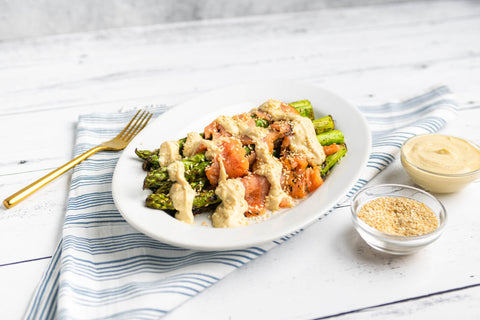 Spring is here, and summer is just around the corner! Time for the perennials to start blooming! And, yes, this includes asparagus. This long, spear-like veggie is a member of the lily family. The word asparagus comes from the Greek meaning for “spout” or “shoot.” Asparagus is one of the healthiest vegetables we can eat, and here’s why: Asparagus is age-defying. It’s loaded with vitamin-like antioxidants. We’re still not sure how this translates into our diet, but preliminary studies indicate it may also neutralize harmful free radicals in our bodies, potentially slowing the aging process.
Spring is here, and summer is just around the corner! Time for the perennials to start blooming! And, yes, this includes asparagus. This long, spear-like veggie is a member of the lily family. The word asparagus comes from the Greek meaning for “spout” or “shoot.” Asparagus is one of the healthiest vegetables we can eat, and here’s why: Asparagus is age-defying. It’s loaded with vitamin-like antioxidants. We’re still not sure how this translates into our diet, but preliminary studies indicate it may also neutralize harmful free radicals in our bodies, potentially slowing the aging process.
Another anti-aging property of this amazing veggie is that it may help our brains fight cognitive decline. Like leafy greens, asparagus delivers folate, which works with vitamin B12 (found in fish, poultry, and meat) to help prevent cognitive impairment. In a study from Tufts University, older adults with healthy levels of folate and B12 performed better on a test of speed and mental flexibility. If you’re 50-plus, be sure you’re getting enough B12: Your ability to absorb it decreases with age.
Asparagus is full of other nutrients as well. It is a good source of vitamin B6, calcium, magnesium and zinc, and a very good source of dietary fiber, protein, vitamins A, C, E and K, thiamin, riboflavin, niacin, folic acid, iron, phosphorus, potassium, copper, manganese and selenium, as well as chromium, a trace mineral that enhances the ability of insulin to transport glucose from the bloodstream into cells.
Asparagus, along with avocados and watermelons, is particularly rich in glutathione, a small protein composed of three amino acids: cysteine, glutamic acid, and glycine. This compound is considered a valuable detoxifying agent in the human body. Glutathione has also been called the "master antioxidant" that regulates the actions of lesser antioxidants such as vitamin A and vitamin E within the body. Dietary intake of glutathione from food sources such as asparagus may be associated with protection against certain forms of cancer.
Asparagus also contains high levels of the amino acid asparagine, which actually has diuretic properties. This healthy veggie is low in calories (about 4 calories per spear), high in antioxidants, and full of fiber, so dig in!
The most common type of asparagus is green, but you might see two others in supermarkets and restaurants: white, which is more delicate and difficult to harvest, and purple, which is smaller and fruitier in flavor. Despite which type you choose to buy, asparagus can be cooked in many different ways, or enjoyed raw in salads.
Here is an easy recipe to try this month:
Asparagus Spears with Smoked Salmon and Tangy Mustard Dressing
Makes four (4 spear) servings.
This is a great last-minute appetizer idea. Thicker asparagus spears are easier to manage for wrapping. For a vegan twist, omit the salmon. It’s still loaded with flavor.
 Ingredients
Ingredients
1 pound asparagus, tough ends snapped (about 16 spears)
2 teaspoons extra-virgin olive oil
Sea salt and freshly ground pepper
4 thin slices smoked salmon (about 4 ounces), each cut in 4 lengthwise strips.
2 tablespoons Tangy Mustard Dressing (recipe below)
Cilantro sprigs or toasted sesame seed, for garnish
Preparation
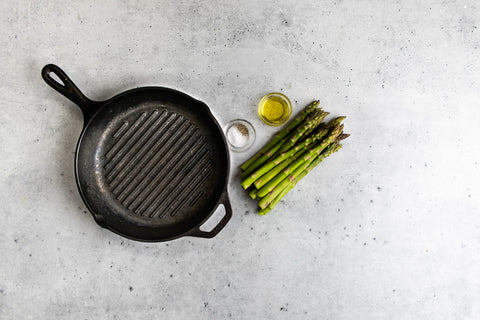 Preheat the grill to medium-high heat. Lightly coat the asparagus with oil. Season with salt and pepper to taste.
Preheat the grill to medium-high heat. Lightly coat the asparagus with oil. Season with salt and pepper to taste.
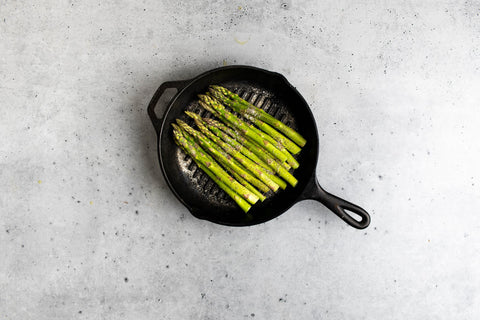 Grill for 2 to 3 minutes, or until al dente but not soft. Remove from the grill. The asparagus will continue to cook as it cools. Do not overcook or the spears will be too soft and difficult to handle. When cool enough to handle, wrap each spear with a slice of salmon. Arrange on a serving platter and drizzle with the dressing. Garnish with the cilantro or sesame seed and serve immediately, or chill to serve later.
Grill for 2 to 3 minutes, or until al dente but not soft. Remove from the grill. The asparagus will continue to cook as it cools. Do not overcook or the spears will be too soft and difficult to handle. When cool enough to handle, wrap each spear with a slice of salmon. Arrange on a serving platter and drizzle with the dressing. Garnish with the cilantro or sesame seed and serve immediately, or chill to serve later.
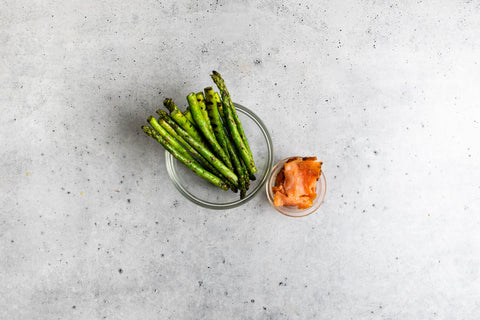 This recipe also works well with grilled asparagus spears.
This recipe also works well with grilled asparagus spears.
Tangy Mustard Dressing
Makes: 1 1⁄4 cups
This addictive dressing goes together in a flash. The best surprise is that there is no added oil. It’s great on salad or as a condiment for grilled salmon or chicken.
 Ingredients
Ingredients
3⁄4 cup soft silken tofu
1⁄4 cup white miso
1⁄4 cup unseasoned rice wine vinegar
1⁄4 cup Dijon mustard
1⁄4 cup fresh lemon juice
1 tablespoon agave nectar
2 cloves Melissa’s garlic
1⁄2 teaspoon Worcestershire sauce
1⁄4 teaspoon ground black pepper
Preparation
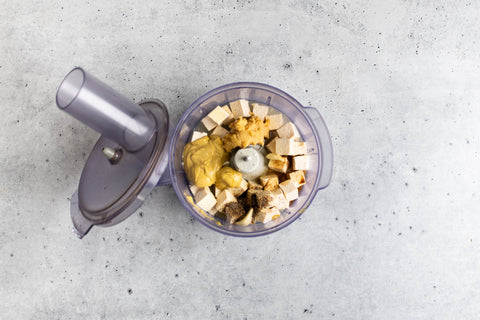 Combine all of the ingredients in the jar of a blender or bowl of a food processor. Blend or process until smooth. Refrigerate for up to 1 week.
Combine all of the ingredients in the jar of a blender or bowl of a food processor. Blend or process until smooth. Refrigerate for up to 1 week.

Another anti-aging property of this amazing veggie is that it may help our brains fight cognitive decline. Like leafy greens, asparagus delivers folate, which works with vitamin B12 (found in fish, poultry, and meat) to help prevent cognitive impairment. In a study from Tufts University, older adults with healthy levels of folate and B12 performed better on a test of speed and mental flexibility. If you’re 50-plus, be sure you’re getting enough B12: Your ability to absorb it decreases with age.
Asparagus is full of other nutrients as well. It is a good source of vitamin B6, calcium, magnesium and zinc, and a very good source of dietary fiber, protein, vitamins A, C, E and K, thiamin, riboflavin, niacin, folic acid, iron, phosphorus, potassium, copper, manganese and selenium, as well as chromium, a trace mineral that enhances the ability of insulin to transport glucose from the bloodstream into cells.
Asparagus, along with avocados and watermelons, is particularly rich in glutathione, a small protein composed of three amino acids: cysteine, glutamic acid, and glycine. This compound is considered a valuable detoxifying agent in the human body. Glutathione has also been called the "master antioxidant" that regulates the actions of lesser antioxidants such as vitamin A and vitamin E within the body. Dietary intake of glutathione from food sources such as asparagus may be associated with protection against certain forms of cancer.
Asparagus also contains high levels of the amino acid asparagine, which actually has diuretic properties. This healthy veggie is low in calories (about 4 calories per spear), high in antioxidants, and full of fiber, so dig in!
The most common type of asparagus is green, but you might see two others in supermarkets and restaurants: white, which is more delicate and difficult to harvest, and purple, which is smaller and fruitier in flavor. Despite which type you choose to buy, asparagus can be cooked in many different ways, or enjoyed raw in salads.
Here is an easy recipe to try this month:
Asparagus Spears with Smoked Salmon and Tangy Mustard Dressing
Makes four (4 spear) servings.
This is a great last-minute appetizer idea. Thicker asparagus spears are easier to manage for wrapping. For a vegan twist, omit the salmon. It’s still loaded with flavor.

1 pound asparagus, tough ends snapped (about 16 spears)
2 teaspoons extra-virgin olive oil
Sea salt and freshly ground pepper
4 thin slices smoked salmon (about 4 ounces), each cut in 4 lengthwise strips.
2 tablespoons Tangy Mustard Dressing (recipe below)
Cilantro sprigs or toasted sesame seed, for garnish
Preparation



Tangy Mustard Dressing
Makes: 1 1⁄4 cups
This addictive dressing goes together in a flash. The best surprise is that there is no added oil. It’s great on salad or as a condiment for grilled salmon or chicken.

3⁄4 cup soft silken tofu
1⁄4 cup white miso
1⁄4 cup unseasoned rice wine vinegar
1⁄4 cup Dijon mustard
1⁄4 cup fresh lemon juice
1 tablespoon agave nectar
2 cloves Melissa’s garlic
1⁄2 teaspoon Worcestershire sauce
1⁄4 teaspoon ground black pepper
Preparation


